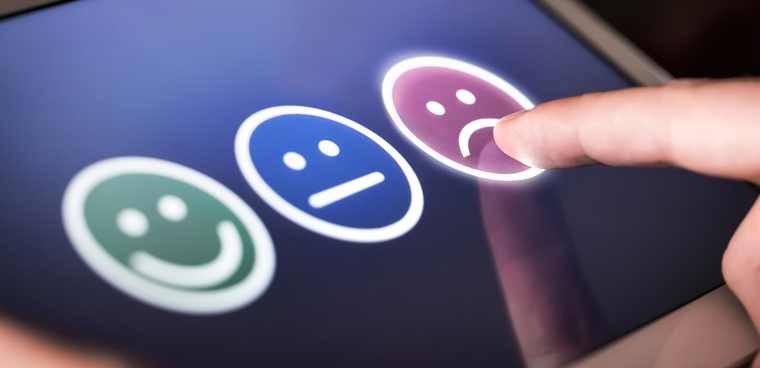The power of bad

Steve Kelman shares insights from a new book about negativity and the importance of seeking out the positive.

I suspect that just about every reader of this blog who works for government -- and probably many who do not -- has on occasion been frustrated and angry about the unrelieved concentration on the negative in media reporting about government. The press seems to operate on the opposite of the principle our mothers taught us, "If you don’t have anything bad to say, don’t say anything at all."
One of the messages of a wonderful new book, The Power of Bad, is: Don’t blame the journalists. The authors -- John Tierney, a science writer, and Roy Baumeister, a professor of social psychology at Australia's University of Queensland -- argue that media outlets are giving people negative news because people react more strongly to it. Not just about government, but about life in general.
There is ample evidence for the proposition that people pay more attention to negative events and emotions -- bad news -- than to good news. "Bad health or bad parenting makes much more difference than good health or good parenting" Tierney and Baumeister note. "The pain of criticism is much stronger than the pleasure of praise."
Researchers have noted that "there was a word for an unexpected negative event, accident …but most people couldn’t think of (a word for) the opposite." By the age of five, children are much quicker to spot a fearful or angry face than a happy one. In one experiment, people focused on a face longer when it was described as belonging to a person who had thrown a chair at a classmate than if the identical face was described as belonging to a good Samaritan.
Partly, this seems to be baked into our DNA by evolution. "In our ancestral savanna, the hunter-gatherers who survived were the one who paid more attention to shunning poisonous berries than to savoring delicious ones," the authors write. "They were more alert to predatory lions than to tasty gazelles. Recognizing a friend’s kindness usually wasn’t a matter of life or death, but ignoring an enemy’s animosity could be fatal."
The second reason for the greater attention to bad news is what psychologists call the "availability bias," defined as the human tendency to think that examples of things that come readily to mind are more representative than is actually the case." So "the number of people killed worldwide by al-Qaeda and ISIS and their allies in the past two decades is smaller than the number of Americans who died in their bathtubs," Tierney and Baumeister write, but it is much easier to visualize terrorism victims than bathtub fatalities, so we think about such horrors more. They suggest the conclusion from existing studies that it takes four positive events to counteract the influence of a single negative one.
However, one of Tierney and Baumeister’s key points is that "what worked for hunter-gatherers doesn’t always work for us. The urge to load up on fattening calories was useful for lean times in the savanna, but it can lead to obesity and ill-health when junk-food merchants tempt you all day long."
Their basic message is that to combat the power of bad, we need to go beyond just accepting reactions implanted in our brains when we were primitive creatures under threat in the forest. We need to be conscious and mindful of the problems these intuitive reactions create.
"Compensate by keeping the rule of four in mind, they write. "Every time you feel devastated by an insult or a critique, scroll down and read four compliments. When you’re furious at a friend for letting you down, force yourself to recall the times the friend came through for you." In government, force yourself to think about four positive stories to counteract the negative one.
Furthermore, a complement to the power of bad is its opposite -- what the authors call the "Pollyanna principle," or seeing the positive side of adversity. One study of the most-commonly used words in 2 million New York Times articles and 800 million tweets showed that the ratio of positive to negative words people used was 3-l for tweets and 4-1 for newspaper articles. In another study, while negative tweets got read more often, positive ones got liked or retweeted more often.
"Even though a bad event triggers a stronger immediate reaction than a good one, negative emotions typically fade more quickly than positive ones," Tierney and Baumeister write. When we are reacting to stimuli we don’t control, the power of bad dominates. But when we ourselves control the narrative, positivity can shine forth. We certainly should be honest in portraying government problems as well as successes, but this book suggests that talking about the positive is good advice.
There is also a fascinating discussion in the book about the value of rewards versus punishments in influencing behavior. The discussion was one of the few times my mind has been changed by something I read. I will blog about this chapter from the book next week.


